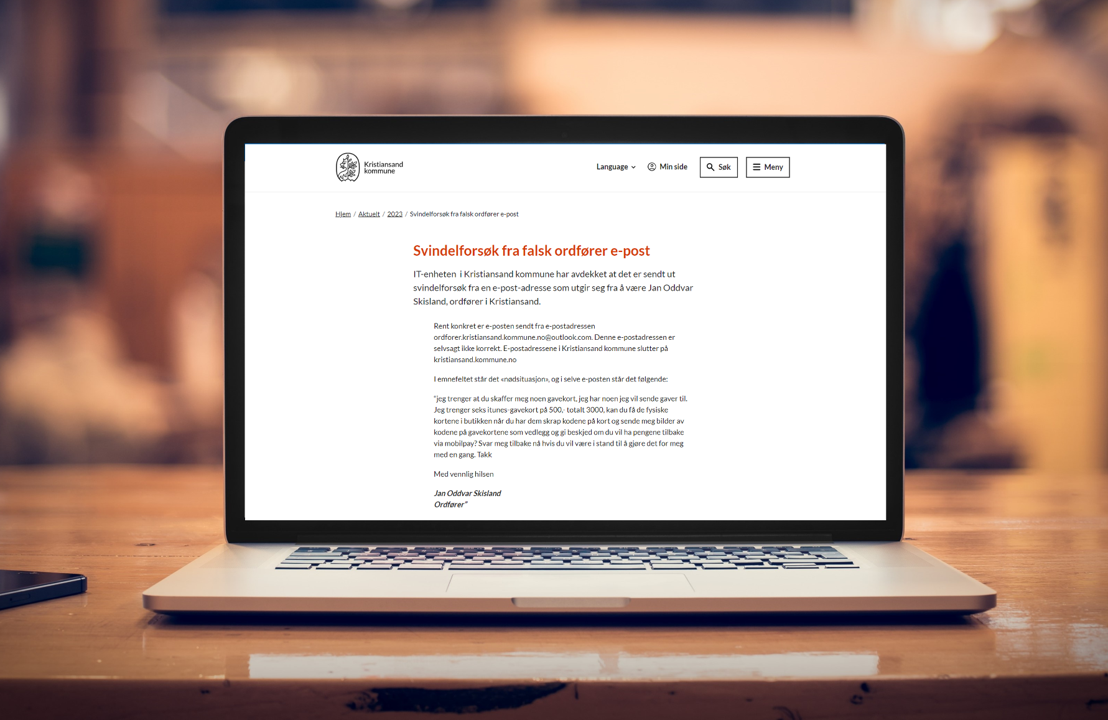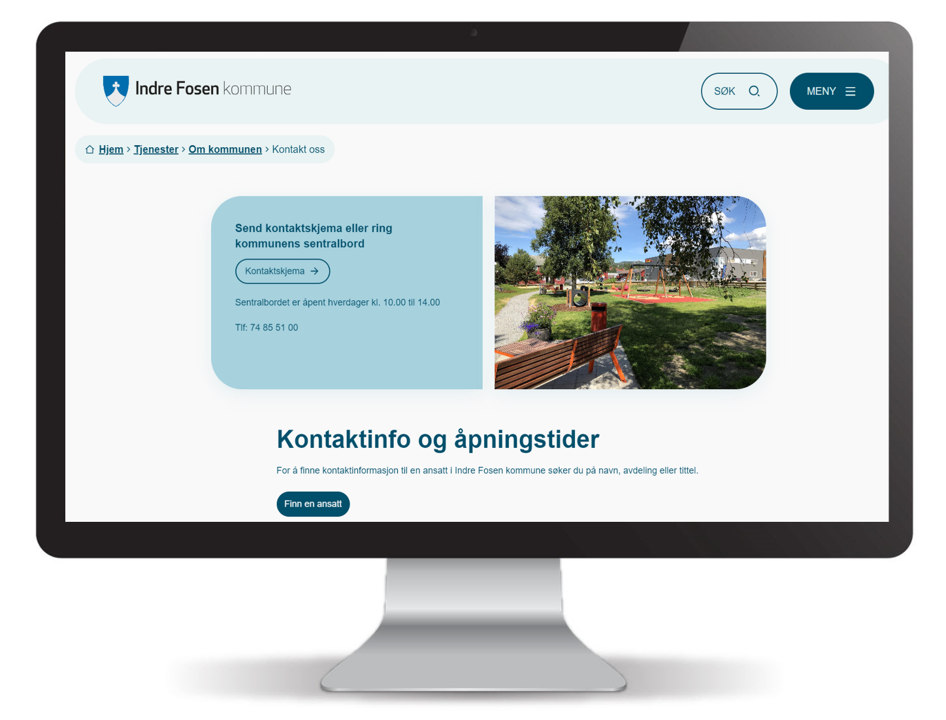The initiative is a great example of how you can both streamline the handling of incoming inquiries and protect yourself from scammers.
Talk about putting IT security and good follow-up on the agenda!
An Increase in Fraud Attempts
The number of fraud attempts is increasing, and the trend shows no signs of stopping. That means we need to think security at every level.
It’s no secret that the inbox is an attractive target for scammers, who constantly try new ways to break in.
One example is Kristiansand municipality, which recently uncovered a new scam method: At the beginning of the year, the IT department discovered that someone had impersonated the mayor of Kristiansand and sent out a series of fraudulent emails to residents.

Scary? Absolutely.
This brings us to the measures Indre Fosen municipality has implemented.
Moving away from email
In an interview with Digi.no , Indre Fosen explains that phishing attacks via email are a risk they no longer wish to expose themselves to:
One wrong click, and the entire municipality could be ‘trapped,’ with all systems locked down and hacked.
That’s how Øyvind Lindseth, Head of the Document Center at Indre Fosen municipality, describes the risk. After a thorough evaluation, the municipality decided to stop using email as a communication channel with residents.
Before we removed the email inbox, we received repeated warnings from IT that this address was one of the biggest threats to the municipality’s IT security.
Instead, the municipality chose to adopt digital forms.

Why digital forms?
When you open an email, it can be difficult to determine whether an attachment or link is a phishing attempt.
By using digital forms with login, you can remove this uncertainty.
This bold choice also brings several advantages, such as:
- Direct routing of inquiries to the right person using predefined rules.
- Faster response times for the public since all information is structured effectively.
- Reduced risk of phishing attacks and other fraud attempts.
In short: This is a win-win situation that benefits both residents and the municipality.
Follow up in 3-2-1
Indre Fosen designed its form in a way that makes it easy for caseworkers to follow up on inquiries from residents.
Here’s how a resident fills it out:
- The resident selects a main category for the inquiry.
- Then, a subcategory is chosen.
- The system uses this information to send the inquiry directly to the correct department and person.
Everything Happens Automatically!
By using digital forms, residents also avoid having to download email clients just to contact the municipality.
Put simply: A digital form requires no installation for the user. All they need to do is make a few simple selections, fill in the form, and hit send.
A secure tool for capturing, structuring, and delivering data
Some of the criticism revolves around the vulnerability of proprietary systems. But since the municipality chose to use Interact, they don’t need to worry about this criticism. Responsibility for system development lies with ACOS, not with the municipality.
This is how Thormod Hellesøy, Director of Self-Service at ACOS, addresses concerns. He explains that Interact was developed specifically to securely capture, structure, and deliver data to receiving systems.
Today, the solution is used by 55% of Norway’s municipalities and 75% of county municipalities – maybe even yours?
The system is developed according to strict security requirements, with annual penetration tests to ensure data security and privacy compliance.
Verification of the sender
Another security measure Indre Fosen implemented is requiring users to log in with ID-porten before submitting their inquiries.
Requiring login provides several benefits:
- The municipality can be more confident about who the sender is
- Residents don’t need to re-enter personal details like address and contact information. This ensures caseworkers can find the necessary details right away.
– Of course, you can also choose to set up the service without login, adds Thormod. That allows senders to remain anonymous.
No matter which option you choose, you can rest assured that security is well taken care of.
What About Artificial Intelligence?
Several organizations are considering AI technology to interpret and structure emails in an effort to reduce the risk of fraud attempts.
And yes – new problems require new solutions.
But what if the solution is already available?
As Thormod explains:
– If you use already available tools for data structuring, the cost and need for AI might be unnecessary
And remember: Taking small steps toward digitalization, like Indre Fosen has done, is far better than no progress at all. That way, you can gradually build your digital maturity until you’re ready for the next step